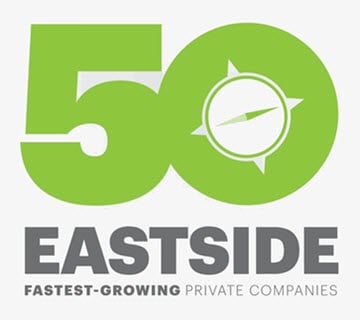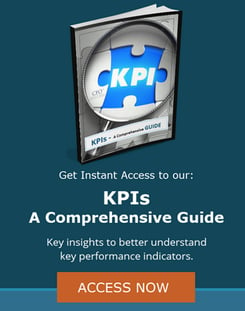 There is a misconception that business services companies do not need to prioritize cash flow management in the same way that retail businesses do because they do not have the same kind of inventory demands. However, cash flow planning is just as important for service providers as it is for retailers because cash is the lifeblood of both!
There is a misconception that business services companies do not need to prioritize cash flow management in the same way that retail businesses do because they do not have the same kind of inventory demands. However, cash flow planning is just as important for service providers as it is for retailers because cash is the lifeblood of both!
Key Takeaway: Cash flow forecasting is as important for service providers as it is for retailers. By understanding the types of unique challenges that services companies face, they can take the necessary steps to improve forecasting outcomes.
In fact, poor cash flow planning is one of the biggest reasons businesses fail across all industries, which makes cash flow forecasting of the utmost importance to companies of all types. As Kevin Briscoe explains when discussing business planning,
Cash flow forecasting may be an arduous task, but it is a vital one. This critical process will not only tell you how much cash your business is expected to generate but also what it is going to need to fund future expansion and working capital. While your forecasts will never be 100% accurate, you will develop an uncanny ability to predict the future if you devote the proper resources to cash flow forecasting sooner rather than later.”
Proper cash flow forecasting for service providers relies on understanding the challenges ahead and making a strategic plan to overcome them. And yet, cash flow planning will look a little different for a service provider versus a retailer. Find out what business services companies need to know about cash flow forecasting:
Understanding Forecasting Challenges
Effective cash flow planning faces a number of people and process-related challenges, which can compromise the integrity of the resulting forecast, including:
- Seasonality – Business service providers with strong seasonality (like tax preparers) will need to adapt their forecasts to account for this strong seasonal revenue skew.
- Lack of Historical Data – Services companies need at least 12 months of historical data to prepare a cash flow forecast, although three years or more is ideal. Without enough historical context projections will lose at least some degree of confidence.
- Relying on The Wrong Metrics – Good forecasts are those that are based on the right metrics. Tracking the wrong types of metrics for your industry or business goals can lead your cash flow forecast astray.
- Failure to Notice Trends – It is not simply the metrics themselves that are important to track. It is also crucial for service providers to understand trends around key metrics as well. Trends like lengthening AR, increasing client churn rate, rising transportation costs for client meetings, growing contractors’ fees, and changes to payment terms on vendor contracts can all significantly affect forecasting.
- Incorrect Breakeven Assumptions – A longer than expected payback period on a technology implementation or the addition of a new role can have a substantial impact on a service provider’s cash flow forecast.
- Poor Resources of Fragmented Data Sources – As the old saying goes, “You can’t measure what you can’t see.” Without the right resources to provide transparency into cash inflows and outflows a service provider’s forecasts will be incomplete.
- Management Deprioritization – If management does not truly recognize the importance of cash flow forecasting, they will not stand behind efforts to improve it and may even deprioritize devoting resources to it.
How to Improve Forecasting
More accurate cash flow projections provide increased assurance to service providers that they have the resources needed to run their daily operations as well as make strategic moves like launching in a new market. The best way to improve cash flow forecasting is to:
- Improve Communication – An effective cash flow forecast is going to require input from a variety of people throughout the company. Ensure that lines of communication are open so that included people can provide the insights and figures that they have in a timely and collaborative manner. Because business services companies often have employees working from a number of different locations, this will likely require digitizing accounting and finance functions to keep information moving between groups as quickly as possible.
- Establish Processes – Create a documented process for developing cash flow projections that specifies which deliverables are needed from which teams/roles in the company. Amend it as needed to keep it current, especially where contract workers are included in the process.
- Separate Revenue from Cash Flow – Revenue and cash flow are different, but many companies treat them as one in the same. Remember, services businesses often generate or obtain cash in ways that are outside of their main business functions (for example, through referral programs, partner incentives, etc.), which makes it important to keep the two separate.
- Take a Holistic View of Cash Inflows and Outflows – De-silo AR and AP to get a better view of overall cash flow, including the most up-to-date fixed and variable costs.
- Consolidate Data – Pull all your data into one place using a cash flow tool that caters to the specific needs of service providers. Where possible, create workflows to automatically pull updated information from bank and credit accounts.
- Incorporate Macroeconomic Factors – B2C service providers should include consumer confidence levels in their cash flow forecasting, while B2B service providers will want to include small business confidence levels.
- Use Data Analytics Tools – Using the right tools (software platforms, integrated apps, etc.) will facilitate real-time analysis, improving not only the accuracy of your forecasts, but also their timeliness.
- Scenario Planning – Cash flow forecasting does not need to be a single prediction. In fact, multi-scenario planning adds increased confidence to forecasts by modeling what cash flow could look like with variables factored in that would represent a “worst case scenario.”
Remember, whether services companies decide to do one forecast or many, monitoring and adjusting cash flow forecasts is crucial for maintaining appropriate cash levels to fund ongoing operations and invest in the future of their organizations. Our team elaborates on this point in saying,
“No cash flow forecast should be set in stone, since there may be customers who fail to pay, sales that don't materialize, or unexpected expenses that show up on your doorstep. Once you publish a forecast, continue to monitor results in real time as much as possible. Doing this will allow you to identify opportunities to improve your process and may permit you to take advantage of a better cash position on occasion.”
Get access to our free cash flow calculator instantly!
When you need strong financial management, reach out to us for more information on how our team can come alongside your company to help it thrive. Our group of trusted financial executives can provide as much or as little help as you need to keep your company on track and help foster growth. We offer financial consulting for businesses, outsourced CFO services, and financial assessments to companies across a wide variety of industries and locations.






